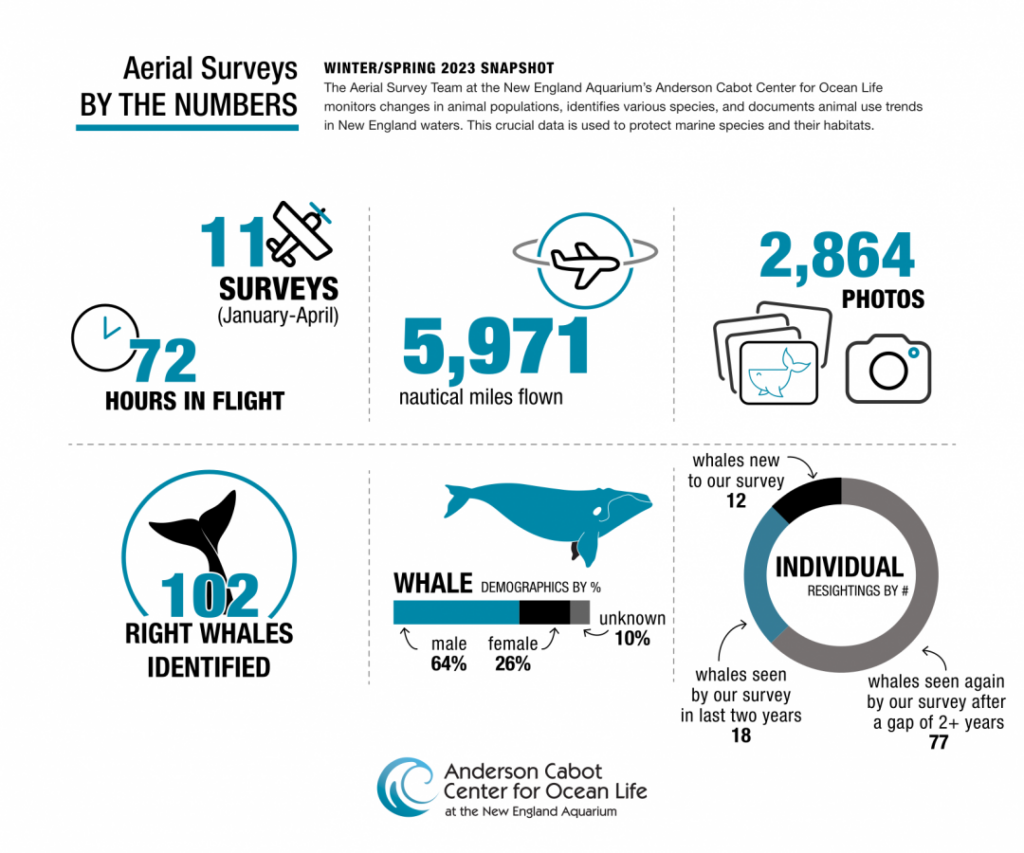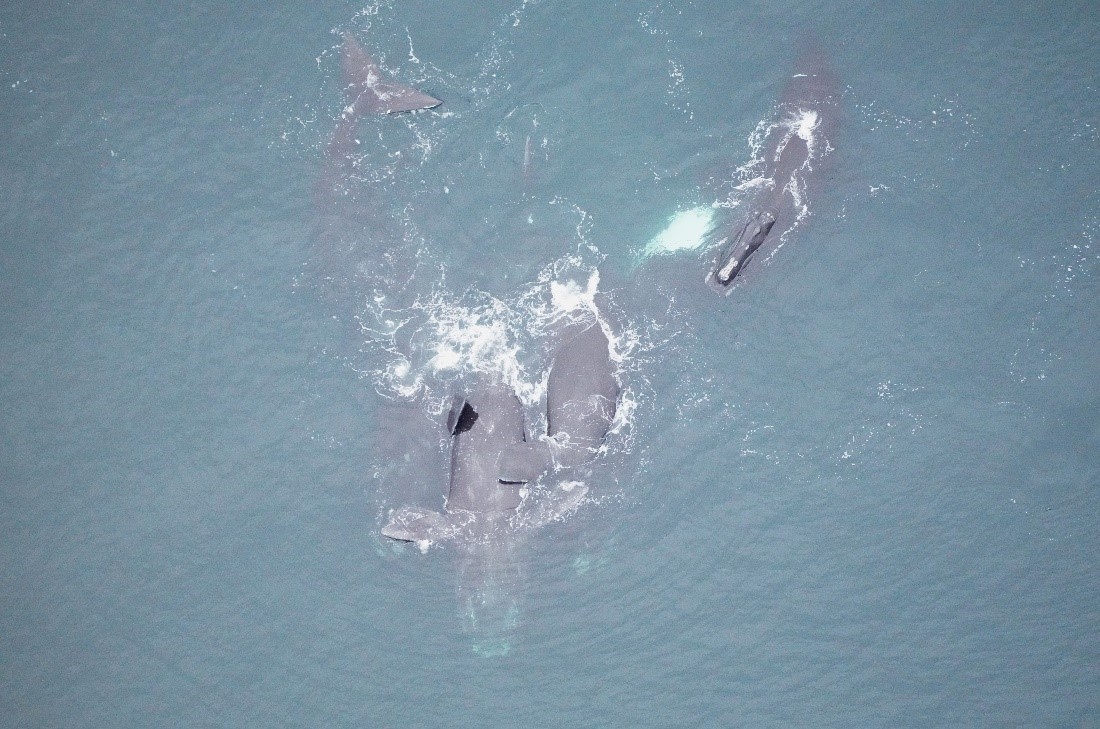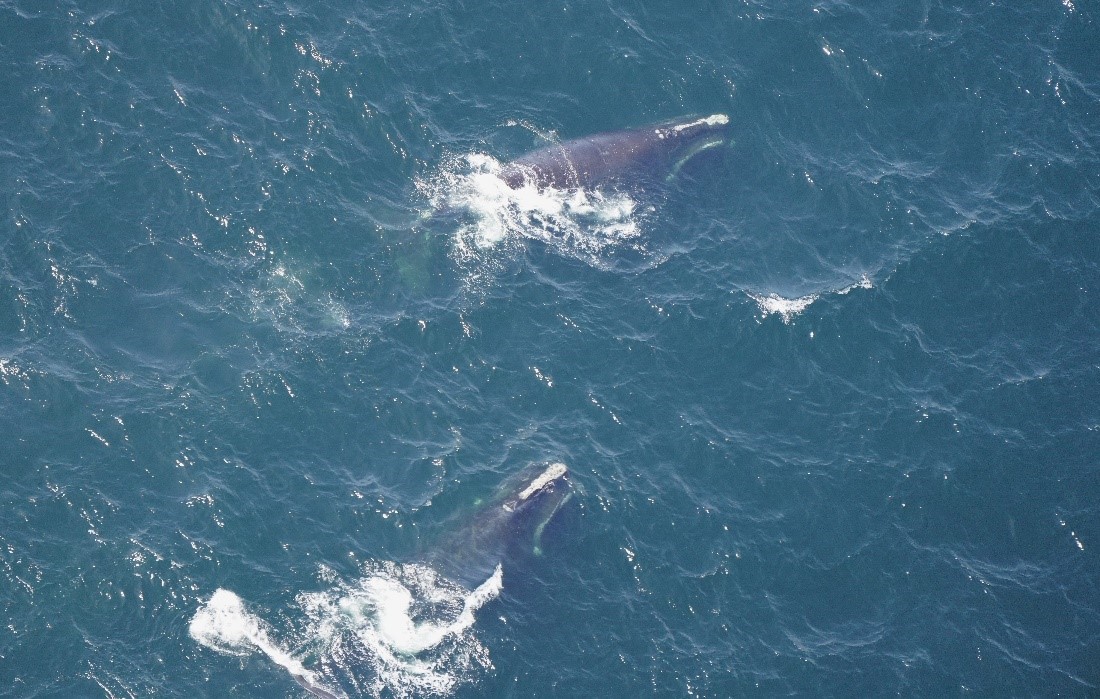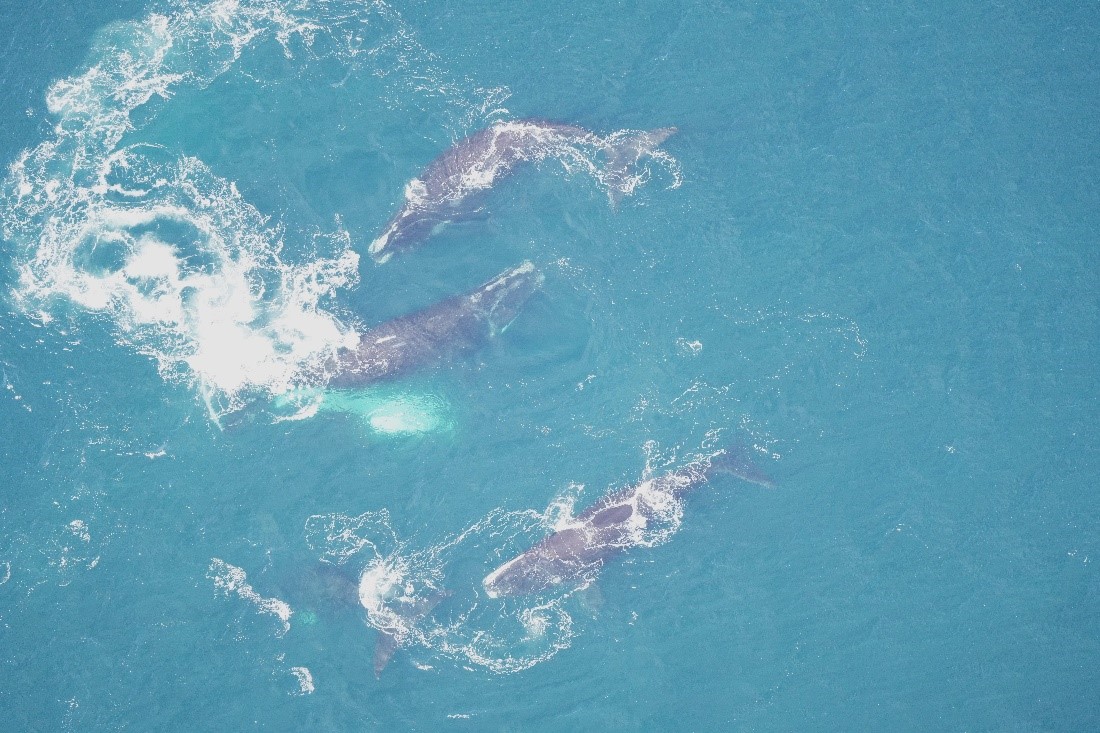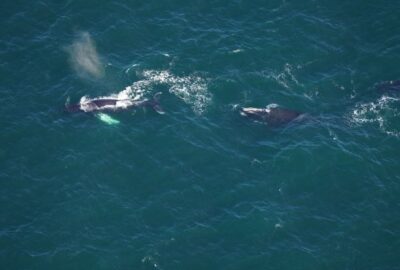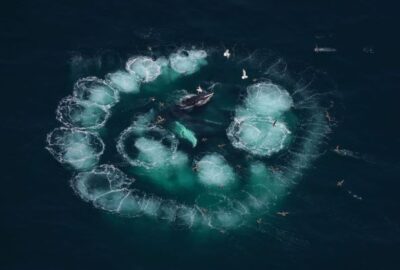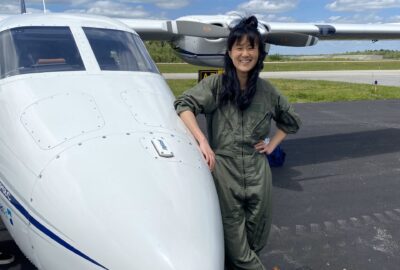Recapping an Exciting Aerial Survey Season
Our aerial survey team had a “whale of a season,” documenting over 102 right whales in New England waters this winter and spring.
By New England Aquarium on Wednesday, May 31, 2023


The New England Aquarium aerial survey team flies surveys in the Southern New England shelf waters year-round. While we see a larger number of species in the summertime, including humpback whales, fin whales, and dolphins (see our previous blog on how we tell all these animals apart!), the winter to spring season is the peak time for right whale sightings. In the past few months, we have flown eleven surveys and documented at least 102 individual whales – which is almost 1/3 of the entire population!
Nantucket Shoals is an important habitat for right whales, especially during the winter months. This past winter (January and February), all of our right whale sightings occurred in this shallow area. Many of these whales were concentrated in aggregations and would surface quickly between frequent dives, indicating they were feeding below the surface. This feeding aggregation stayed on the Shoals through March.
In mid-March we started observing right whales south of Muskeget Channel, which runs between Martha’s Vineyard and Nantucket. During this time, there were still right whales on Nantucket Shoals, and we observed right whales feeding and socializing in both areas.

Although we think the whales primarily come to Southern New England to feed, we often see social behaviors like surface active groups (SAGs) as well. SAGs consist of two or more whales closely interacting at the surface; SAGs can (but do not always) involve mating behaviors. Often there is a single “focal” animal at the center of a SAG that floats belly up at the surface while the other whales dive and roll around it. One of our largest SAGs this year was a group of eight whales with an adult female, Bocce (Catalog #3860), as the focal animal. Bocce is 15 years old and has already had two calves: one in 2016 and one in 2021. Bocce’s status as a calving female makes her critically important to the recovery of this species.
/
In April, right whale sightings often trail off in our study area as the whales move onto other habitats. However, this April, we documented a small group of right whales in the southern portion of our survey area. We had seen some of these individuals already this year (documented either over the Shoals or south of Muskeget Channel), however there were also several new whales in this aggregation too.
The movement of right whales in our survey area over these past four months underscores how dynamic right whale movement can be as they follow their prey. Our sightings not only help us learn more about the whales, but can also help protect them through the use of Dynamic Management Areas (DMAs). A DMA is a temporary, voluntary, speed reduction zone around areas with recent right whale detections and all vessels transiting through a DMA are encouraged to travel 10 knots or less. They are different from Seasonal Management Areas (SMAs) A sighting of at least three right whales by our aerial team (outside of an existing SMA) triggers NOAA to issue a DMA for 15 days that can be extended if right whale presence persists. At least one (and sometimes more) DMA was active in southern New England from January to April, as a result of right whale sightings by our surveys and other research groups working in the area. This shows that this is an important area for vessels to be aware of whales in the area!
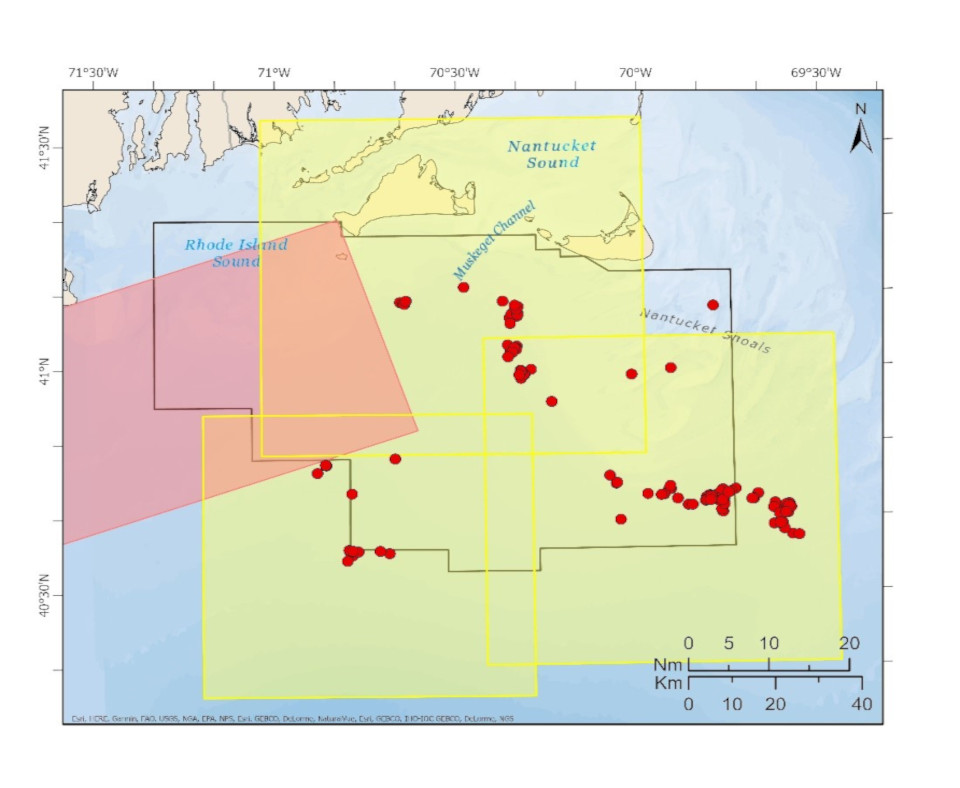
Something interesting that we noticed is the amount of turnover of individual right whales within the groups of whales we saw throughout the season. While we might see a group of whales on every flight in our survey area over several few months, that group may be made up of almost entirely different whales each time we fly!
In fact, 77 of the 102 individuals we documented were sighted only once this year, and we didn’t resight any whale more than three times. Of the whales resighted more than once, only one individual appeared to stay in the area for three months, while others stayed one to two months. This rapid turnover of individuals implies consistent movement into and out of the area.
Among the 102 whales we photographed, we were happy to see some old favorites. One of these was Musketeer (Catalog #4360), who is a staple of our aerial surveys and is easily identifiable from the plane by the feather-shaped scar on its head. Since 2019, Musketeer has almost exclusively been documented in Southern New England, including during the late summer and fall when right whales are less common in this area. Whales like Musketeer underscore the importance of conducting long-term, systematic surveys to understand species distribution and occurrence in a rapidly changing climate. While many right whales utilize Southern New England only in the winter and spring months, in the last six years small numbers of right whales have also been documented here in the summer and fall as well.
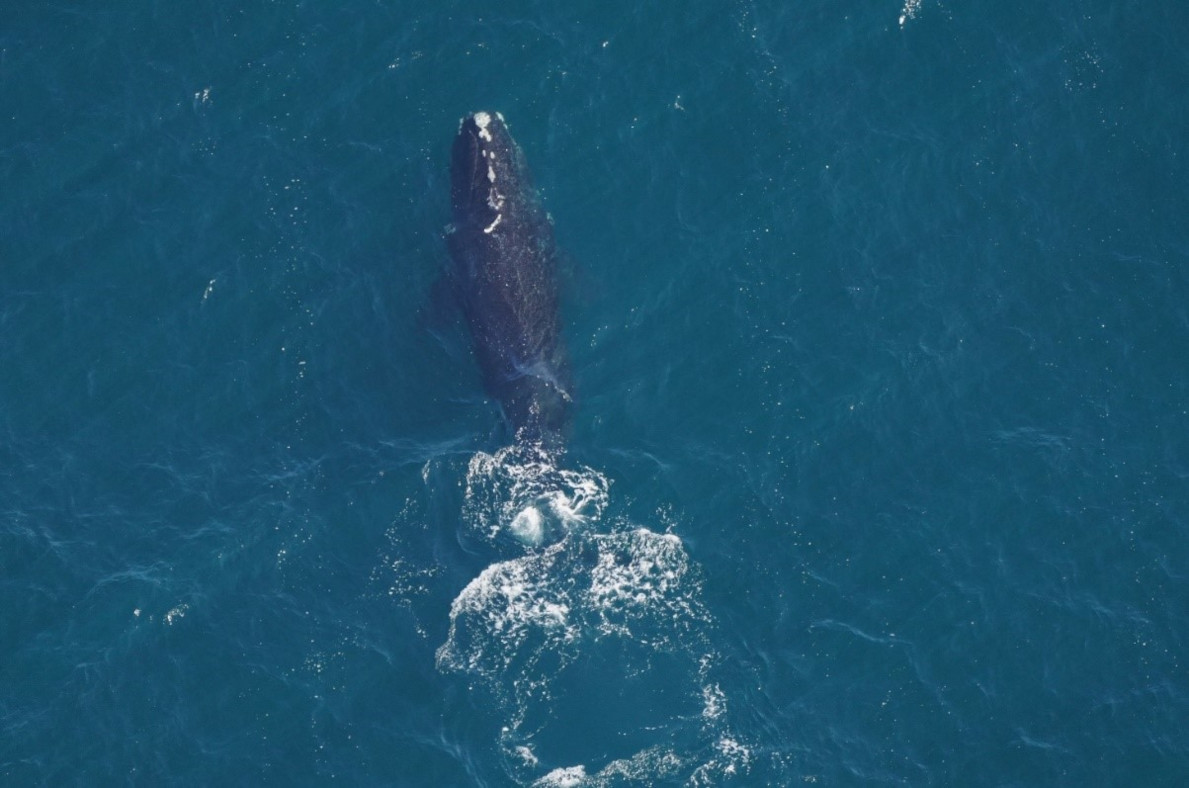
We have also noticed some new “faces” this year and have documented twelve individuals that we have not sighted in our survey area since surveys began in 2011. Of these, three are at least 35 years old:
Herb (Catalog #1250) is a 41-year-old male who used to be a regular visitor to the Bay of Fundy, Canada, where he was documented by the vessel-based Kraus Marine Mammal Conservation group. He has not been documented in Southern New England before.
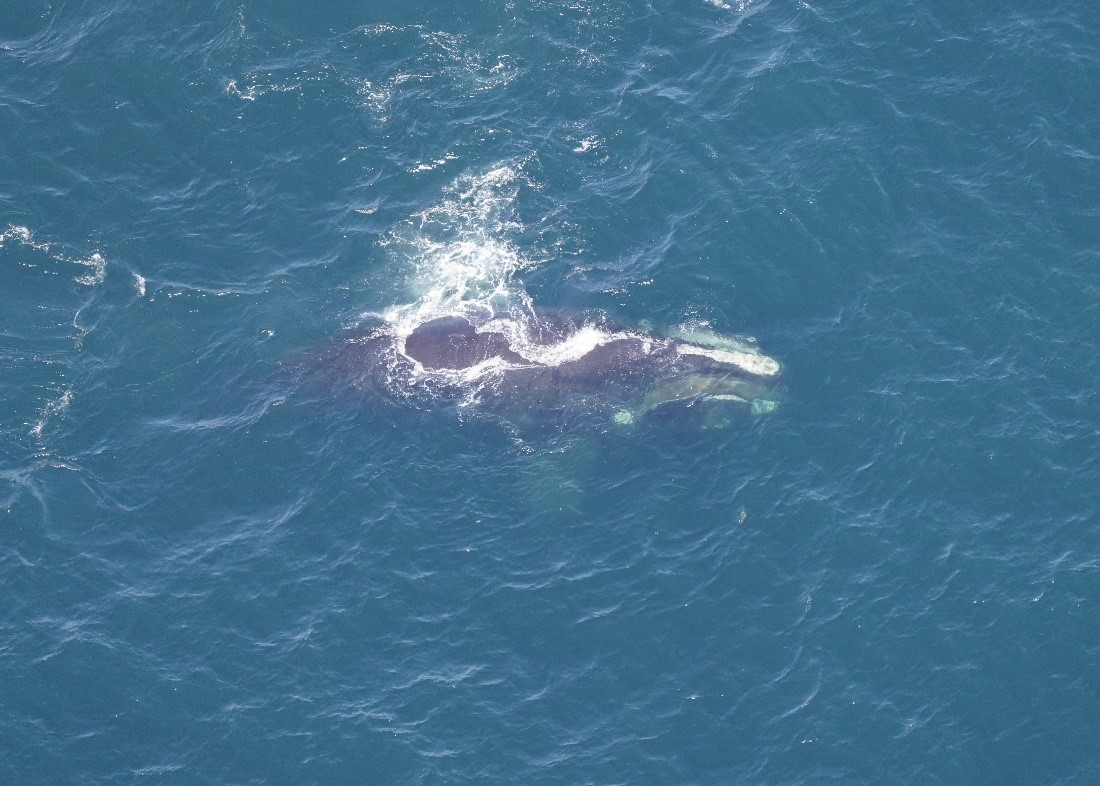
Wolf (Catalog #1703), a 36-year-old female who has not been documented in Southern New England before. Wolf has had four known calves, one of which (Caterpillar, Catalog #3503) is still alive.
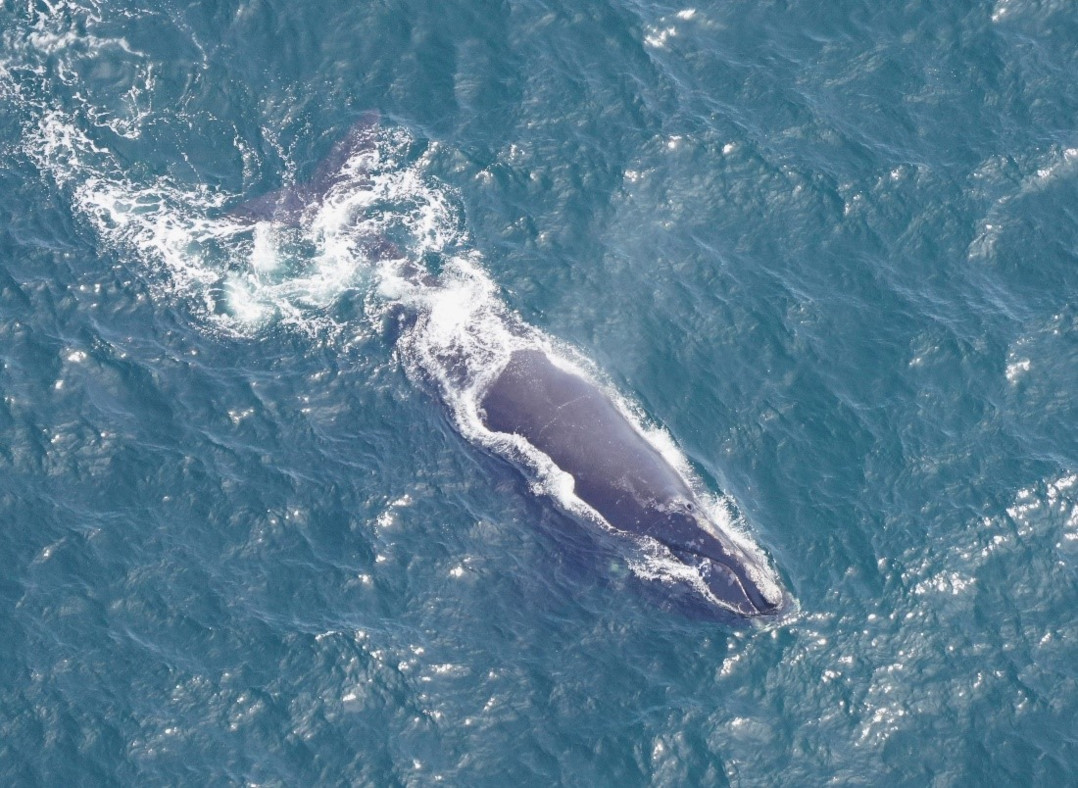
Legato (Catalog #1802) is a 35-year-old female who has only been documented once in Southern New England, in 2002. She has had four calves: one of her calves, Portato (Catalog #3802), has been documented in Southern New England twice before.
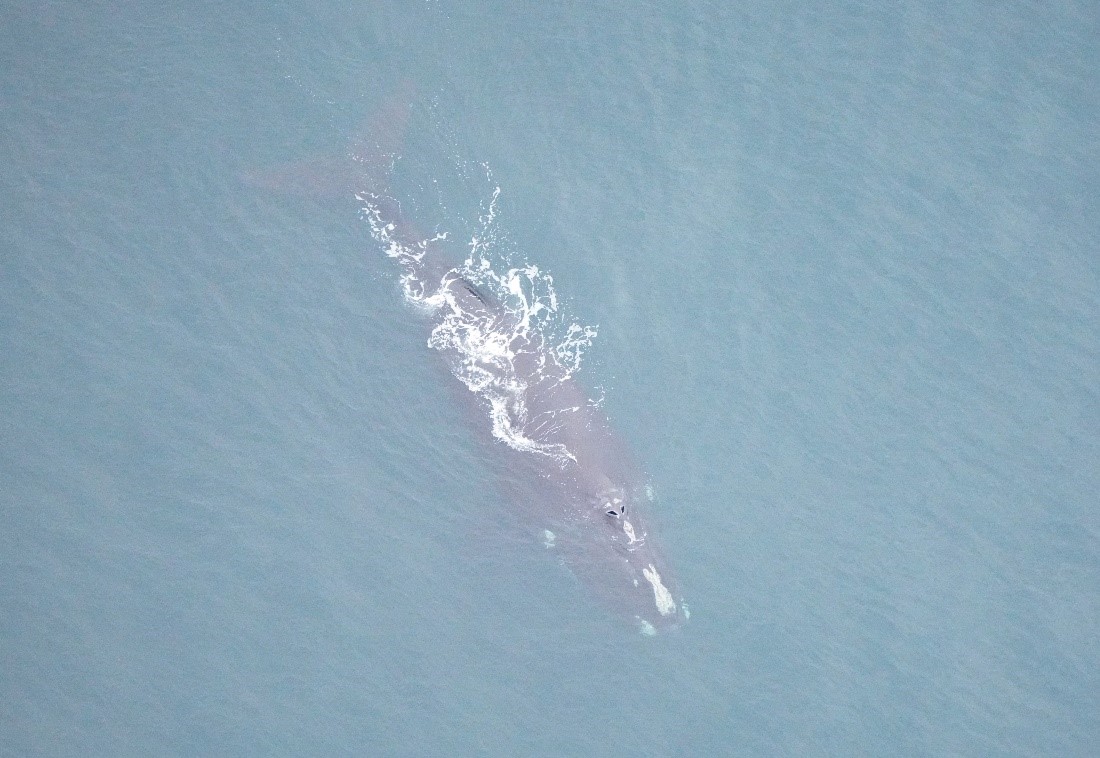
What brings these older whales here for the first time when they have already established long, repeated sighting histories in other areas? Why do others return consistently year after year? How long will they continue to come back? While we usually have a lull in right whale sightings during May and June, we look forward to discovering more when the right whales return in the summer and fall!
All photos taken by NEAq aerial observers on surveys of wind energy areas and surrounding waters sponsored by MassCEC, BOEM and NOAA, under NOAA Permit #25739.
